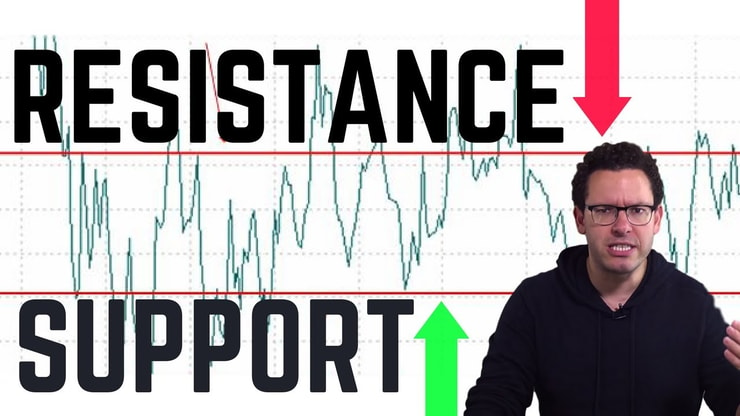Boxing positions … it keeps coming up in the Trading Challenge chat room. It’s a trading strategy I never use. But it seems to be misunderstood — especially the risks involved. So I thought I’d write a quick post about it…
Table of Contents
“Tim, do you box positions?”
In case you’re wondering if it’s some sort of pugilistic exercise…
First I’ll give you a loose definition of boxing a position. Then I’ll explain the reasons traders attempt it and how the alphabet agencies cracked down on it. Finally, I’ll explain the risk versus reward of boxing a trade and give you my take on it.
What Does It Mean To Box a Trading Position
In simple terms, boxing a trading position means to hold both long and short positions in the same stock. Technically, for it to be a pure box you’d have to be long and short from the same exact price.
For example, say you open a short position on XYZ stock at $1 a share. To box this position, you’d then go long the same number of shares at the same price. Most traders who box positions use different accounts to do so.
Short Sell Against the Box
In the past, the common description of this trading strategy was to short sell against the box. The SEC cracked down on shorting against the box because, effectively, it was a zero-risk trade.
The version of boxing a position used today involves buying or selling against your trade as a hedge. More on that below…
Why Box Positions?
Prior to 1997, it was common to short sell against the box as a tax-deferral strategy. By holding both long and short positions of the same stock, you could offset capital gains taxes.
Since the taxpayer relief act of 1997 (TRA97) capital gains taxes apply to the same tax year as the trade. This rule applies to each individual trade. It effectively wipes out the reason most traders used the strategy.
Boxing Positions to Hedge
A modern version of boxing a trade is to take an early short. Since it’s usually easier to find borrows when a stock is on the way up, the trader gets short early. But that increases risk.
Instead of waiting for the stock to break support, you’re riding it up. So, to mitigate risk, the trader opens a long position in another account. That way if the stock gets squeezed, they hold an overall position close to net zero.
This video explains the basics of technical support and resistance.
(Note: some brokers don’t allow you to hold both long and short positions in the same account. Those who do usually require you to be net long or short.)
Then, once the price action turns in their favor, they sell the long position. This could be done for a profit or at the break-even point. Meanwhile, they ride the short position for further gains.
More Breaking News
- From Underdog to Top Performer: AREC’s Surge Explained
- Tivic Health’s Move Into Neutropenia: A New Hope?
- MicroAlgo’s Remarkable Surge: What Lies Ahead?
Do Traders Still Box Positions?
Yes, some traders still box, just not for the previously stated tax benefits. It’s usually done to hedge as stated above. Some brokers will allow you to hold both a long and short position in the same stock. But only so long as it’s not a pure box — meaning the exact same number of shares short and long, at the same time and price.
However, most traders who use this strategy do so in different accounts.
The Risk vs. Reward of Boxing a Trade
Like any trading strategy, there are risks and rewards in playing both sides of a trade…
Most traders who are good at boxing positions will tell you that hedging reduces risk. If you go short 100 shares of XYZ at $1 per share and the stock squeezes up to $2 per share, you’re down $100. If you bought 100 shares at $1.10 as the stock squeezed, then you’d only be down $10 if you closed both positions at that point.
(Note: the above example doesn’t account for commissions or borrow fees. It’s a simplified example.)
The key to making this strategy work is to sell the long position for a gain once the stock turns in your favor. And then ride the short. But you open yourself up to certain risks in employing this strategy.
The Risk of Attempting to Box Positions
One of the risks of attempting to box a position is that your timing will be off. What if you sell your long position for a nice profit, only to watch it squeeze to new highs? Yes, you’ve reduced your loss because you hold cash from the long position, but what do you do next? (Hint: follow Rule #1: cut losses quickly.)
Is Boxing a Position Legal?
The answer is slightly complicated. It depends on how — and why — you do it. At some point, you have to report your trades. It’s commonly accepted that you must be net long or short. So across all trading accounts, you need to be short or long overall at any given time.
Keep in mind that I’m not giving you legal advice. You should consult an attorney for that kind of stuff. I’m also not giving you financial advice. Do your due diligence.
Again, some short sellers use this trading strategy based on being right in the long run. So they enter a long position as the stock goes up to reduce losses. If the stock finally turns, they can potentially make money on both sides.
Most traders who want to hedge use a strategy called collaring. Collaring requires buying and writing out-of-the-money options to limit losses. I’m not an options trader, so I don’t do this. Read this post to learn the difference: penny stocks vs. options trading.
Why I Don’t Box Positions

2025 Millionaire Media, LLCYears ago when I was a short-biased trader, I attempted the version of boxing as described above. Not a pure box, just a hedging position. But I only attempted it a few times because, frankly, I sucked at it. I was sure the stock would tank, located shares to short, and got in the trade. As it continued to go against me, I bought with another account.
Talk about confusing…
Losing On Both Sides of the Trade
My Penny Stocking Framework DVD shows the potential for wins going long and short a stock. It depends on where in the framework you trade.
Of course, I tell students over and over again to focus on what works for them. Don’t force trades — the potential for losses is just as strong.
So most people shouldn’t attempt to trade the same stock both short and long depending on where it is in the pattern. At least not at first. Also, I don’t recommend shorting to newbies or those with small accounts. It’s not worth it.
One example is my current favorite pattern — the morning panic dip buy. That pattern fits into the framework outlined in the DVD. But some traders really love to short the panic, instead of buying the dip. That’s fine if it suits them, they’re experienced, and they have a big enough account to cover if they get squeezed.
But I wouldn’t recommend trying to do both. It’s too much of a guessing game about the top and bottom. You have no idea when a stock will tank … and you have no idea when it will bounce.
So, while it seems like a great idea to be long as a stock goes up, sell for profits, and then short as it starts to fall…
… you could also lose on both sides of a trade. Check it out. You could…
- Open a short position.
- Get squeezed.
- Attempt to box by also going long.
- Watch the stock drop from your long entry.
- Sell your long to cut your losses and…
- …watch it squeeze again.
What a disaster that would be…
Trading Psychology: Follow Your Plan and Trust Your Thesis
One of the main reasons I don’t even try to box positions is this: once you cross that line, your psychology gets screwed.
What if your thesis is that the stock will fall off a cliff? Say you locate shares to short, make your plan, and when things look right, you open a short position. But…
… you decide to hedge and open a long position at the same time.
Now, while it may seem smart, what does it say about your thesis? For me, it messed with my head. If I believe a stock is going to tank, why would I buy shares on the way up? Which of my trades is right?
I’d rather trust my thesis and then cut losses quickly. For newbies, this is a much smarter way to learn.
Conclusion
That should clear up the question of whether I box trades. I don’t because I like to keep things simple. I’d rather stick to my plan and cut losses quickly.
Trading Challenge
If you’re ready to learn the nuances of trading, apply for my Trading Challenge today. Before you apply, make sure you’re ready. It takes dedication and commitment. Not everyone gets accepted.
If you’re wondering what people learn in the Challenge, I urge you to take advantage of the Trader & Investor Summit 2019 DVD pre-sale.
Every presenter is one of my students. And several were sitting in the audience only a few years ago. Like Dom, Jack, Kyle, and Huddie. Watch them explain their strategies and also how much they had to study to get where they are.
Have you experimented with the boxing a position trading strategy? What was your experience? New to trading? Comment below with “I will keep things simple to protect myself and stay in the game.” Comment below, I love to hear from all my readers.











Leave a reply